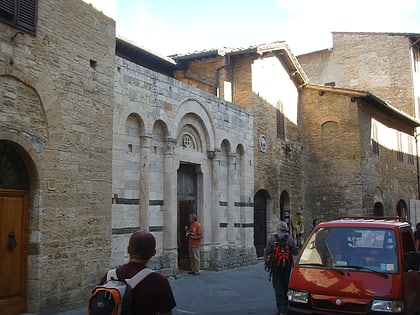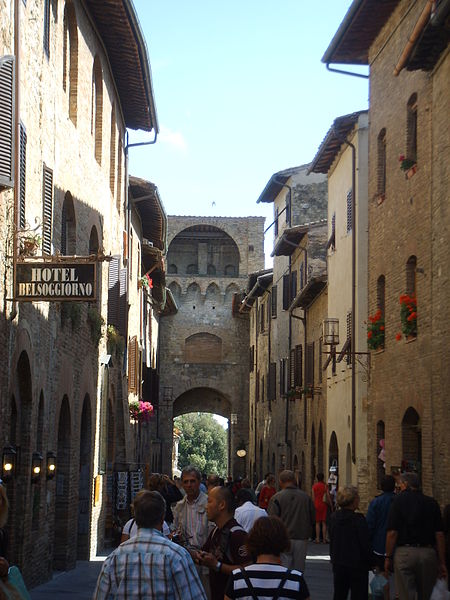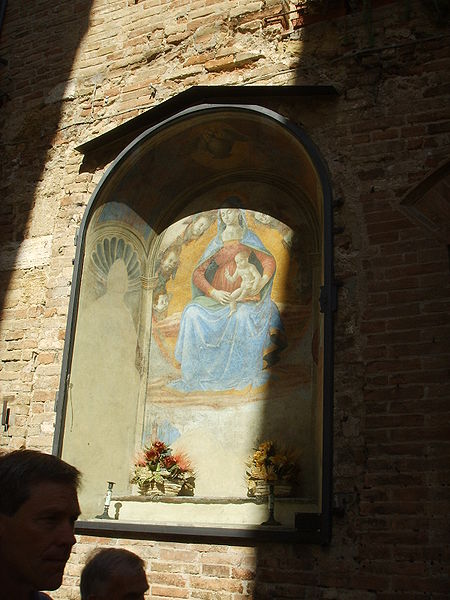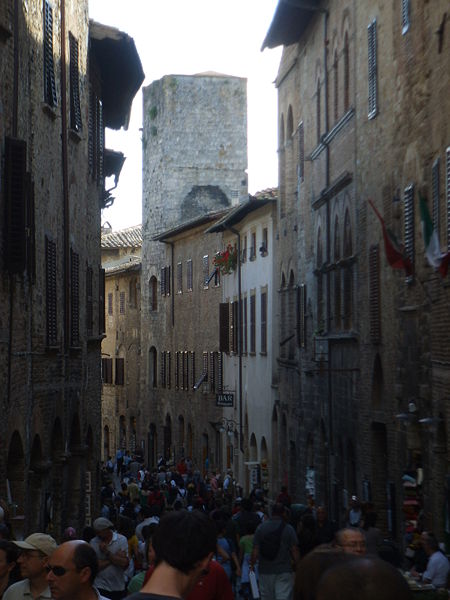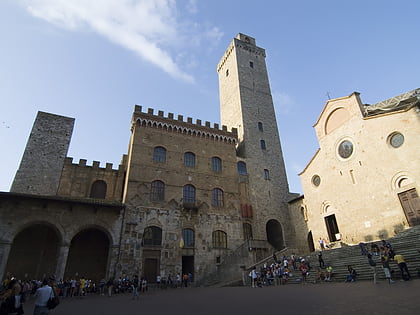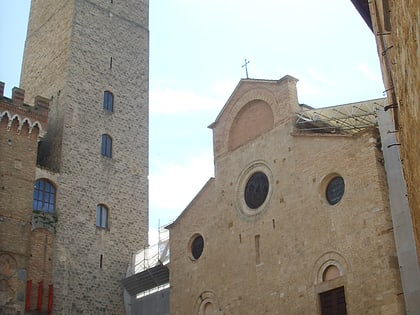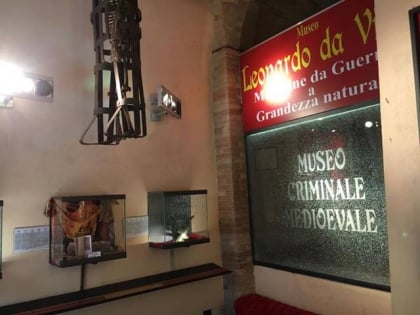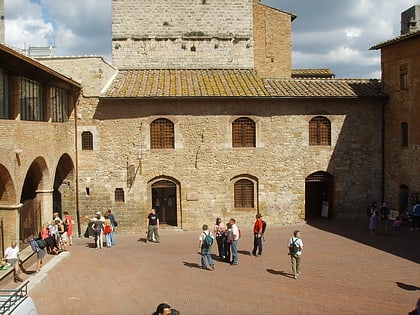Porta San Giovanni, San Gimignano
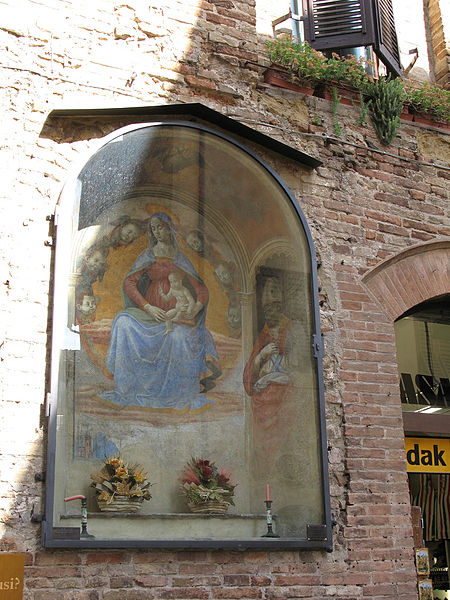
Facts and practical information
Via San Giovanni is one of the most important streets in the historic center of San Gimignano. It runs from Piazza della Cisterna to Porta San Giovanni.
The street, which represents the heart of the San Giovanni district, originated when the area was still outside the walls. Here, outside the ancient city gate that still exists as the Arco dei Becci, a road had branched off southward on the Via Francigena toward Siena, which was incorporated into the new city walls only in 1214.
The thirteenth century was the period of greatest splendor in the area, as many architectural testimonies still remind us. The route, slightly uphill for those entering the town, is lined with terraced houses with the typical stone filaretto, tower-houses, small churches, fondachi, hospices for pilgrims and noble palaces, now often converted into businesses for commercial and tourist use.
Close to the gate is the 17th-century Church of Our Lady of Enlightenment, which was downsized in the early 20th century.
Toward the middle of the street is a fine frescoed tabernacle with the Madonna and Child and a holy bishop, the work of Sebastiano Mainardi.
On the same side a short distance away is the marble facade of the 13th-century Church of St. Francis. On the opposite side is a significant tower house from the late 13th century.
On the left side just beyond is the former convent of Santa Caterina, adjacent to the 14th-century Pratellesi Palace.
The Campatelli palace and tower are located just before the Quercecchio Street junction.
The road ends in a small square that was formerly at the edge of the first circle of walls from the 10th century: the arch of the Becci was in fact the ancient city gate to the south. Next to the arch are the tower of the Becci and the tower of the Cugnanesi with an attached palace.
San Gimignano
Porta San Giovanni – popular in the area (distance from the attraction)
Nearby attractions include: Collegiate Church of San Gimignano, Palazzo Comunale, Sant'Agostino, Piazza del Duomo.
